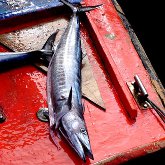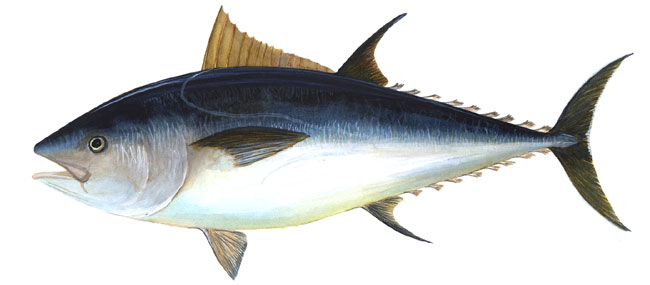
Wahoo Fish Facts
May 1, 2014
Get a $25 Gift Certificate
October 18, 2019Going from “just fishing” to tuna fishing is a gigantic leap. The world of tuna fishing is full of the unknown, especially the weight of a caught tuna. Depending on the region you’ll be fishing, the season, and the depths, you could be catching some of the biggest fish in the sea. Tuna fishing is a great sport and is a wonderful resource for making better sales in fish or seaside marketplaces. This article will describe three distinct, useful tips on tuna fishing for beginners.
Set bait and wait
This is a pretty obvious tip, but is far too often overlooked or shrugged off. For the first tip, you’re going to need to set your bait and just wait for the tuna to bite. As simple as it may sound, just remember to be patient! This cannot be said with enough emphasis. If you try to bait out your tuna and expect them to bite right away when you plummet your hook and bait, you’ll end up going home empty handed.
The trick to this step is to hook the bait live directly into the nose of the fish. You’re going to want to place your baits spread out throughout different depths (this makes your bait setup seem more alluring to the unsuspecting tuna fish). Start by casting out the shallowest baits first, and go deeper and deeper with each cast (this is done so the lines don’t tangle).
Get a good hold of the rod
Get a hold of the fishing rod and reels – for this step take caution to use thick buckskin gloves. If gloves aren’t used, you’ll end up will callused palms and fingers. Keep the fishing rod’s end pointed directly toward the fish. Keep the line tight but don’t pull unless something bites.
Wind it in
This step requires that you have a fishing partner or two. With the aid of a fellow fisherman, you can easily have help winding in one of the many reels. The other help can also help put away and store the rods (in a cabin space or somewhere else on or under deck).
You’re going to need a heavyweight anchor drop that will go directly into the waters where your lines and reels have been set. You will need to next move the hooked rod to one of your mounted, fighting swivel holsters. Keep an eye on the movement of your Bluefin. Rotate your boat until your fishing line is at a 45-degree angle past it and off the gunwale for now.
Your first runs will require the line to be very tight. This is because the Bluefin may attempt to fool you and swim toward you. Just keep that reel tightly gripped and try to keep up pace and don’t lose grip. Keep up with this routine for a while until the fish shows signs of struggle. Now, finally harpoon the exhausted tuna fish and you’ve got it! Now you should have your first catch.


